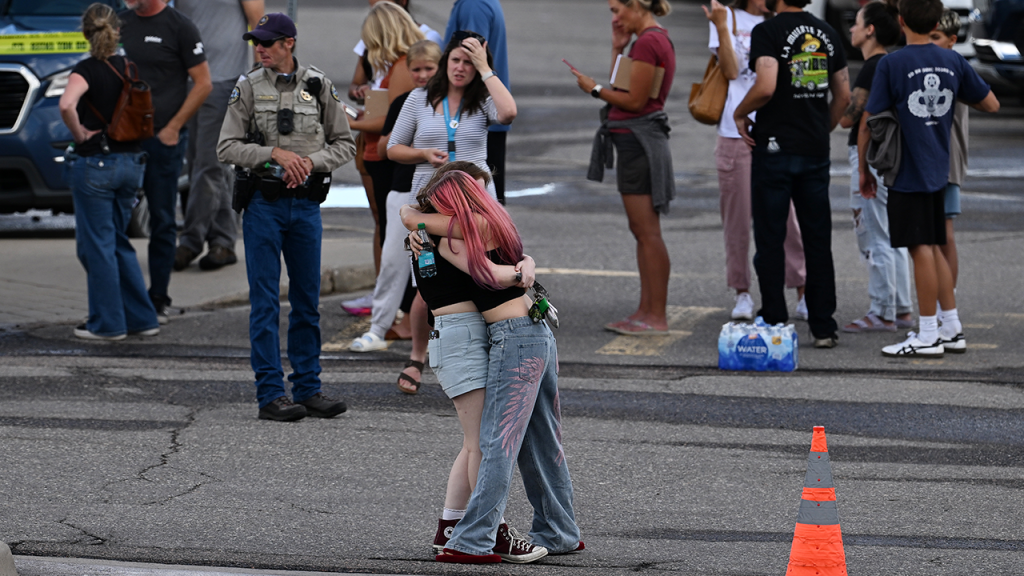The Digital Undertow: How Online Subcultures Fuel Real-World Violence
The assassination of conservative speaker Charlie Kirk has sent shockwaves through the nation, raising urgent questions about the growing influence of digital extremism on real-world violence. At the center of this tragedy stands 22-year-old Tyler Robinson, whose meticulously planned attack defied the typical profile of mass shooters. Unlike those who expect to die during their attacks, Robinson reportedly devised escape routes and left behind a comprehensive digital trail. “This one is incredibly interesting because of how long he says he had been planning this and for how long it seems like he laid in wait,” noted George Brauchler, a prosecutor experienced with high-profile mass shooting cases. What makes Robinson’s case particularly disturbing is the apparent contradiction in his background – raised in “a decent home, surrounded by an intact family” with all the positive markers for youth development, yet somehow reaching a psychological breaking point that enabled him to “shoot and kill another human being in cold blood.” As investigators continue piecing together Robinson’s motives, his case highlights the alarming pathway from online radicalization to actual violence.
The shadow of Columbine continues to loom large over America’s landscape of mass violence, serving as a dark touchstone for those contemplating similar acts. “In every case I’ve handled – Aurora, STEM, even two 16-year-old girls who idolized the Columbine shooters – it shows up,” Brauchler observed. “Columbine just has a certain mystique and mythology to it that people can look back on and say, I want to be like them. Or in the Aurora Theater case, I want to be better than them.” What has fundamentally changed since 1999 is not just the frequency of such attacks but the digital ecosystem that amplifies them. Today’s online forums glorify killers, celebrate casualty counts like video game scores, and disseminate manifestos with unprecedented speed. Following Kirk’s murder, graphic crime scene images spread within minutes across social platforms – a chilling testament to our cultural desensitization to violence. The real-time nature of this exposure creates a feedback loop that simply didn’t exist during earlier mass shootings, exposing impressionable minds to violence with an immediacy and intimacy that can normalize the unthinkable.
Recent research from the ADL Center on Extremism has identified troubling patterns connecting online radicalization to real-world violence, particularly among young people. They’ve observed similar trends in at least four school shootings carried out by minors over the past year. A case in point is 16-year-old Desmond Holly, who injured two classmates before taking his own life at Evergreen High School in September 2025. Investigators discovered Holly had spent significant time in online environments promoting violent extremist ideologies, including a graphic content forum called WatchPeopleDie, where he interacted with posts discussing previous mass shootings. Alarmingly, Holly isn’t an isolated case – the ADL revealed that perpetrators behind school shootings in Madison, Wisconsin, and Nashville, Tennessee, were also users of the same platform. Their findings show how these online spaces frequently host white supremacist, antisemitic, and other extremist material, exposing impressionable users to highly graphic violence that’s often celebrated by the community.
The desensitization occurring in these digital spaces appears to heighten the risk of radicalization and ideologically driven violence, creating what Brauchler describes as environments where young people “believe this kind of horror is normal.” Yet addressing these online cesspools presents significant constitutional challenges. “I’m not ready to trade the First Amendment for an extra layer of security,” Brauchler acknowledged, while emphasizing the need for greater investment in law enforcement and digital forensics. He advocates for comprehensive investigation into the motives behind such attacks: “I want every level of government to be curious about the motives of anyone that engages in this kind of homicidal behavior – to find out what may have triggered them or what fascinated them.” The challenge becomes more daunting when considering the sheer volume of online threats – even when agencies like the FBI receive early warnings, as reportedly happened with the Evergreen school shooter, the flood of concerning content makes timely intervention extremely difficult.
Prevention begins with community vigilance, according to Brauchler, who emphasizes the critical importance of the “see something, say something” approach. He recounted how vigilant parents and anonymous student tips thwarted two teenagers plotting an attack at Mountain Vista High School before they could execute their plan. This grassroots level of alertness represents the first line of defense against potential violence. Additionally, Brauchler advocates for armed school resource officers in every educational building, noting that “mass shooters are cowards” who plan their attacks with two assumptions: “One, that they will have the upper hand because of surprise, and two, they will have the upper hand because they will be the only guns in the school.” While not a perfect solution, visible security presence often deters those contemplating violence, as “they tend not to act when they see a uniformed officer.”
Despite these preventative measures, Brauchler soberly acknowledges that no system can guarantee absolute safety in a world where “evil exists.” The case of Tyler Robinson and his alleged assassination of Charlie Kirk serves as a stark reminder of how online radicalization can transform seemingly ordinary individuals into perpetrators of extraordinary violence. What makes these cases particularly chilling is the calculated nature of modern attacks – the planning, the digital manifestos, the escape routes – all indicating a level of premeditation that differs significantly from impulsive acts of violence. As families like Robinson’s make the painful decision to turn in their own relatives when they suspect violent intentions, we’re confronted with both the human tragedy of these situations and a glimmer of hope that community awareness can sometimes prevent the worst outcomes. The path forward requires balancing constitutional freedoms with public safety, investing in digital monitoring capabilities while empowering communities to remain alert to warning signs among their own members. In the digital age, the frontlines against extremist violence increasingly exist in virtual spaces long before they materialize in the physical world.


